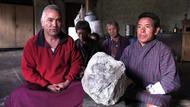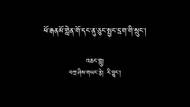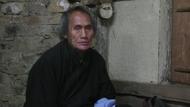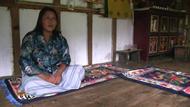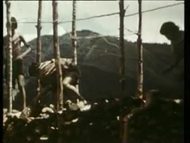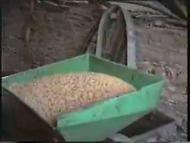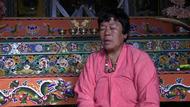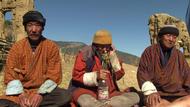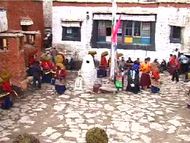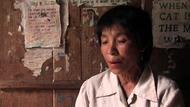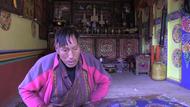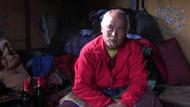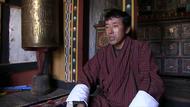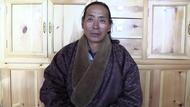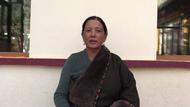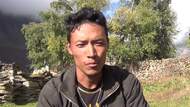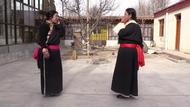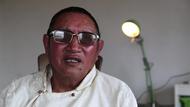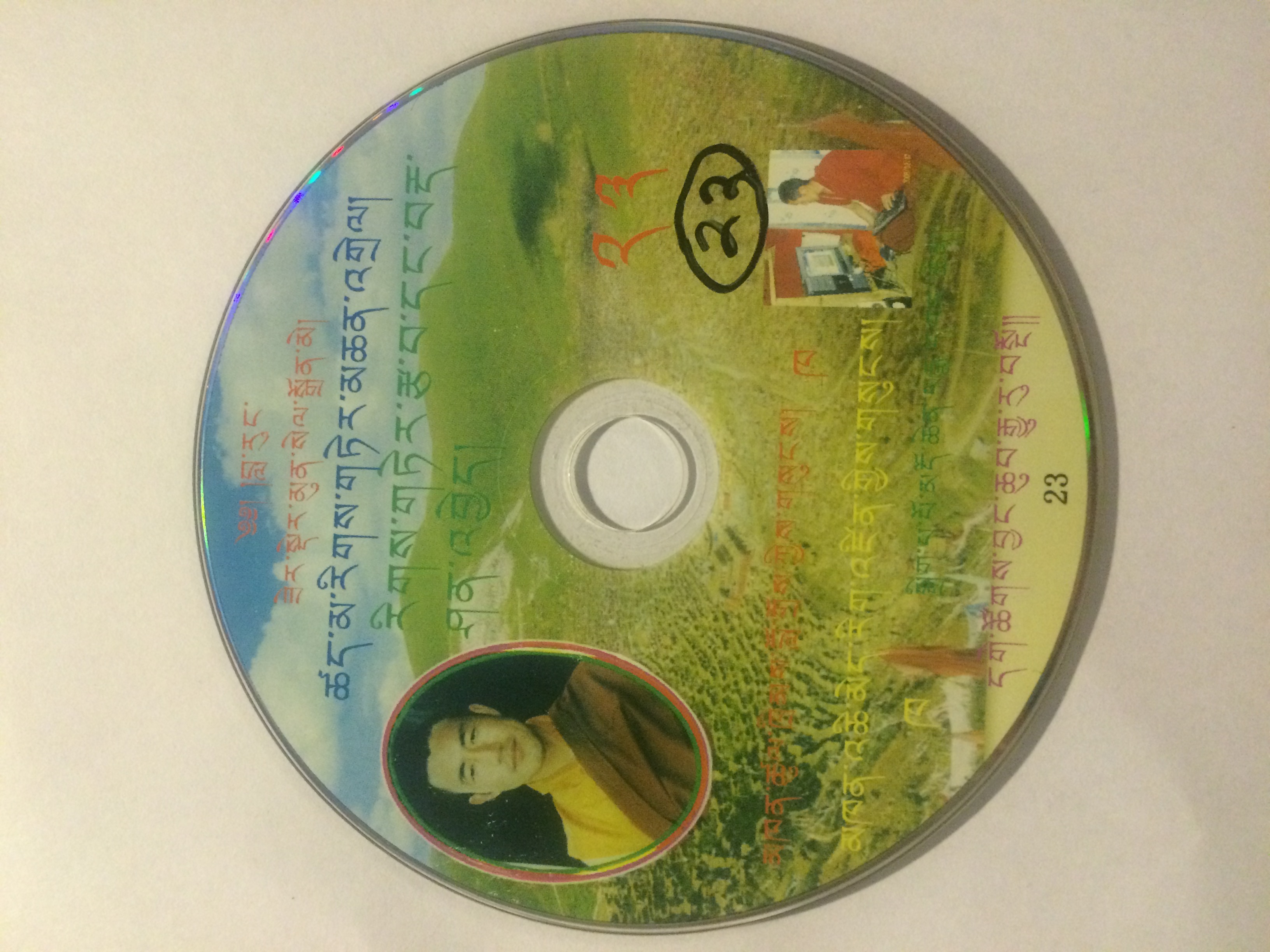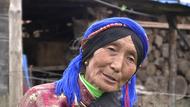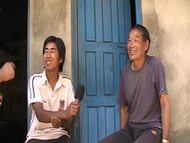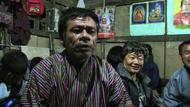Video Overview
A Gurung Man Describes the Traditions of the Village Otar including some religious beliefs and festivals.
- Nepal
- SABtʃhjortiri pudza ləpəri ləmə tsomoमन्दिरमा पुजा गर्नको लागि लामा हाल्छन्।They employ lamas to worship in the temple.
- SABləmə tsõiलामा हाल्यो।They employed lamas.
- SABbali biruwa kro bali tʃjãbə tətikəi piirəबालि विरूवा राम्रो भइदिओस भनेरHaving wished that the crops and plants will grow well,
- SABləm tsũe tsəriलामा हालेर यहाँhaving employed the lamas
- SABtʃhordin the pəri pudza ləsi tsəri tʃhorti səklõ moठुलो मन्दिरमा पूजा गरेर यहाँ ३ ओटा मन्दिर छन्।in order to worship, there are three temples.
- SABtərtsa atsu tərtsa phjaipo naदर्जा त्यो दर्जा (धजा) समातेको छ।It has held the flags.
- SABtsəri tʃjorti soklõ moत्यसपछि तीनओटा ढुङ्गे मन्दिर छन्।There are three temples made of stones.
- SABtsəri ʈirori nanokja nəsesəmmə pudza ləi tsimoयहाँ एक दिनमा विहान देखि वेलुका सम्ममा पूजा गरेर सकिन्छ।The worshipping is finished in one day that begins from the morning.
- SABnəsei nasərpəe puɖa paka rimemuiməe pre təirə tʃhun ləmu nats semuबेलुका गाउँका बुढापाका केटाकेटीहरू सँगै भएर रमाईलो गर्छन्, नाच्छन् ।In the evening, the elderly people along with children together make
- SABəni bərsəri tsəri dəsəĩ tihar tənatseũ matimuअनि वर्षमा यहाँ दशैं तिहार सवै मनाउँछन्।People also observe all festivals including Dashain and Tihar.
- SABkədi pus pəndrəri thepli matimuकसैले पुष पन्ध्रमा ठूलै (चाड) मनाँछन्।Some people observe the begging of January mid of Poush.
- SABmaghe səkrãti saune sə̃krantinə thepe tsãdəi rupəri matimuमाघे सक्रान्ति, साउने सक्रान्ति पनि ठूलो चाडको रूपमा मनाउँछन्।People also observe the first day of Srawan (July-August) and Magh
- SABəkjale tsəri tsu nase madzəri tu tĩ thepe muअनि त्यसपछि यहाँ यो गाउँको विचमा यो ठूलो घर छ।Then, you see there is a big house in the middle of the village.
- SABtsə ama səmuhə tĩयो आमा समूहको घर हो।This house belongs to the Mother's Group.
- SABsamudaik tĩसामुदायिक घर (हो)।Ths is a public house.
- SABtsəri təna tsəjõ karekrəm thẽ le misile bibahə təleयहाँ सबै चिज कार्यक्रम राख्छन्, मान्छे मर्दा, विवाह हुँदाThis becomes the venue of all sorts of programs, such as when people
- SABtsəri satõ pre təmoयहाँ सवै सँगै हुन्छ।All people are together here.
- SABtsətəi nasərpəe amneməe bauneməe tsu tĩ bənebaत्यहि भएर गाउँको आमाहरू बाबाहरूले यो घर बनाएको हुन्।Therefore the elderly parents have constructed this building.
- SABisklul pisjã tsəubis saləri istapəna təpaविद्यालय भने चौविस सालमा स्थापना भएको।The school was however established in 2024 VS.
- SABtsəri təmu bahek əru dzatərpəe mi areयहाँ गुरुङ् बाहेक अरू जातका मान्छेहरू छैनन्।No other castes other than Gurungs are here.
- SABtsərkja ŋəe sepəe tã teno khetipati ləmuत्यसपछि मैले जानेको कुरा प्राय खेतिपाति गर्छन्।The other thing I know is that people grow crops.
- SABkəti tsəre miməe sərkari nokəri ləmuकोही यहाँ मान्छेहरू सरकारी नोकरी गर्छन्।Some people in this village are also engaged in government jobs.
- SABkəti bides nikərire jai puकोही विदेश नोकरिमा गएका छन्।Some people have gone to foreign country for employment.
- SABkəti kaʈhmanɖu besisəhər pokhərari ʈi puकोही काठमान्डु, बेशीशहर, पोखरामा बसेका छन्।Some people have lived in Kathmandu, Bensisahar and Pokhara.
- SABtosə nasəri khas mi le areअहिले गाउँमा खास धेरै मान्छे छैनन्।Now there are not many people in the village.
- SABteno bəsai sərai təi jai puधेरै जसो बसाइसराइ भएर गएका छन्।Many have settled other places.
- SABŋəi sepəe tã təkeũमैले जानेको यत्ति (हो)।This is all I know.
- SABtsəri ənnəpurnə tshetrə pərdimneməeयहाँ अन्नपूर्ण क्षेत्र परेको हुनालेBecause this is the conservation area
- SABtsu bən toso ŋi səmrəktshjə̃ɖ lei puयो बन अहिले हामीले संरक्षण गरेका छौं।We have conserved this area.
- SABtsəri tisili ŋi dzəŋgəlयहाँ माथिपट्टि हामीले जङ्गलUp above, we have conserved the forest.
- SABtoso ŋi sĩto thol ajopəi hisab moअहिले हामीले रूख काटन नपाउने अवस्था (हिसाव) छ।There is a provision that we are not allowed to fell trees.
- SABbən səmrəkshjə̃ɖ lagiri to satõ dudhpokhəriबन संरक्षण गर्नका लागि माथि सवै दुधपोखरीin order to conserve the area, all areas up to Dudhpokhari
- SABsəmmə ŋe məmo dzilla ekjap tshetrə pərdi moत्यहाँसम्म हाम्रो मनाङ् जिल्ला एक्याप क्षेत्र पर्दछ।ACAP area extends up to that part in Manang district.
- SABtsu səmmə ŋie səmrəktshjə̃ɖ ləi puयहाँ सम्म हामीले संरक्षण गरेका छौं।We have conserved the area up to that part.
- SABtsu bəndzəŋgəriयो बनजङ्गलमाIn this forest some birds are found, such as
- SABnotõ nosi kopətre tsilmaडाँफे, मुनाल, कोपत्रे र चिलimpeyan pheasant, crimson-horned pheasant, Kopatre, and eagle
- SABsi kopətre poro tʃjõpa ŋeməoसि, कोपत्रे, काजिल सानो चराहरूSi bird, Kopatre, wild pheasant, and other small birds are found here.
- SABphori, tõsa, tiŋke, bənərbəe tsetoघोरल, आमा घोरल, तिङ्के, बन चितुवाAnimals found in this area are antelope, mother antelope, Tingke,
- SABtəwã dzəntu saõ mromoभालु, जन्तु सवै देखिन्छन्।bear including other wildlives are seen.
- SABtikhi tikhi bənə jamne ŋjone tomuकहिलेकाहिं बनमा जाँदा हामीलाई (जनावरले) भेट्छन्।Sometimes when we go to forest, the animals meet us.
- SABtsəri nasəe kwie muhanəe tʃjãpa muयहाँ गाउँको पानिको मुहान पनि राम्रो छ।The origin source of water is also good in this village.
- SABtsəkjare məndirउतापट्टि मन्दिरThe temple is on the other side.
 Loading ...
Loading ... 




